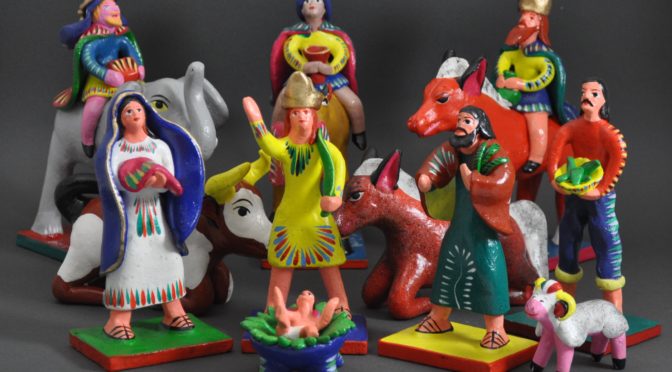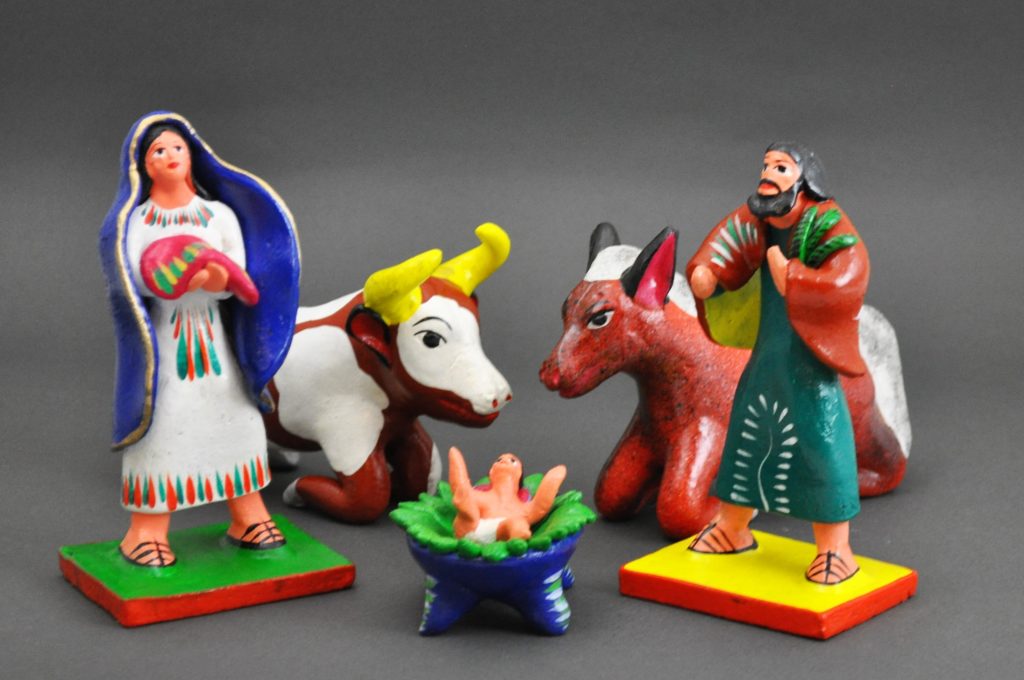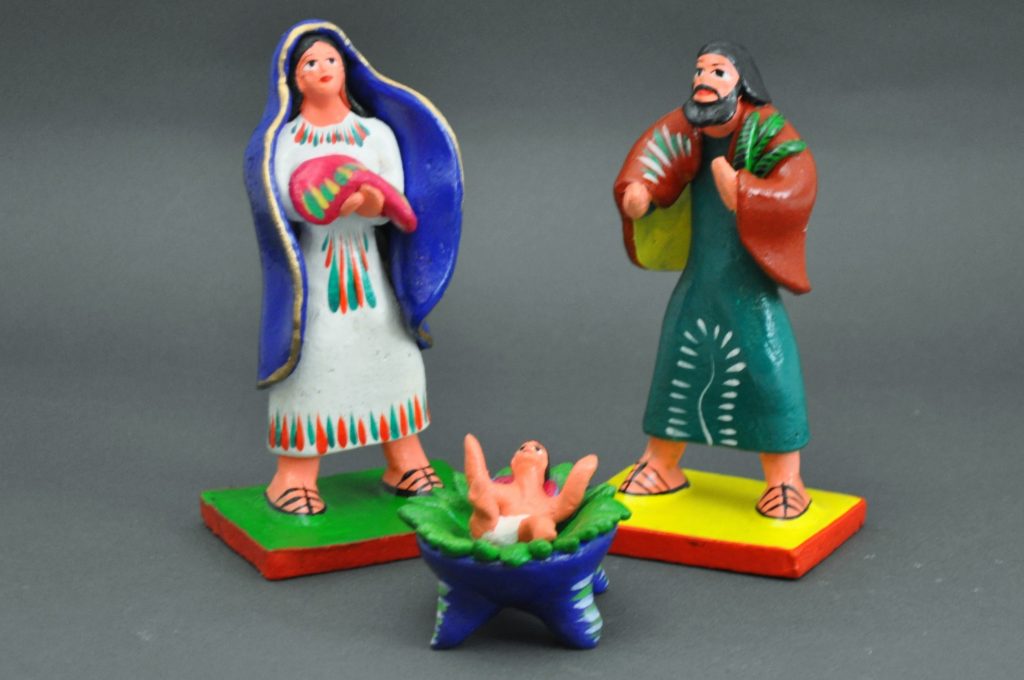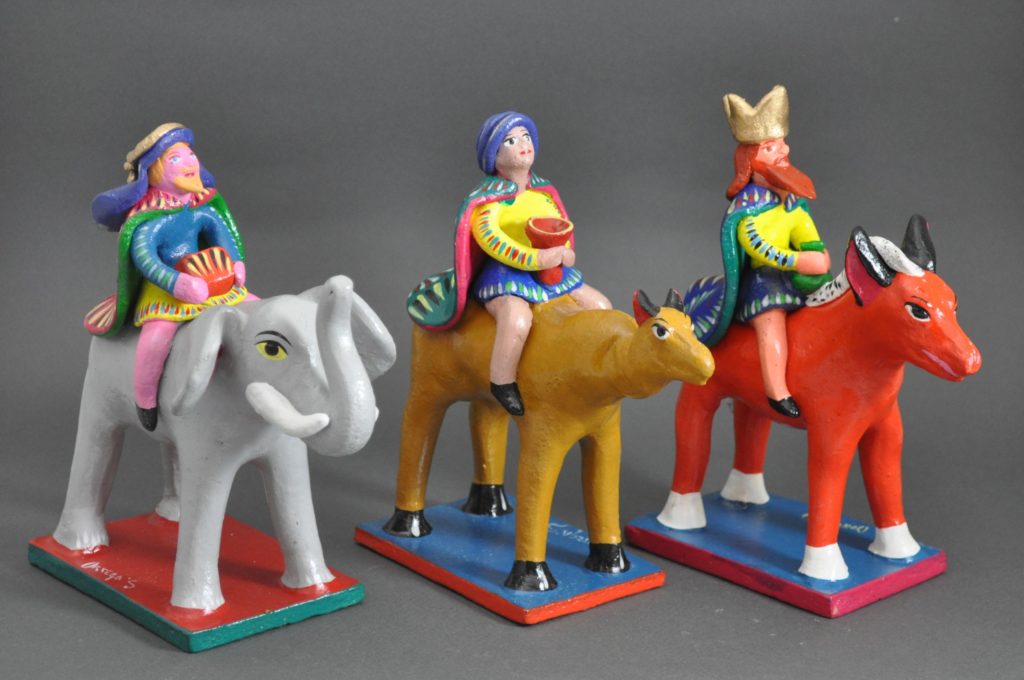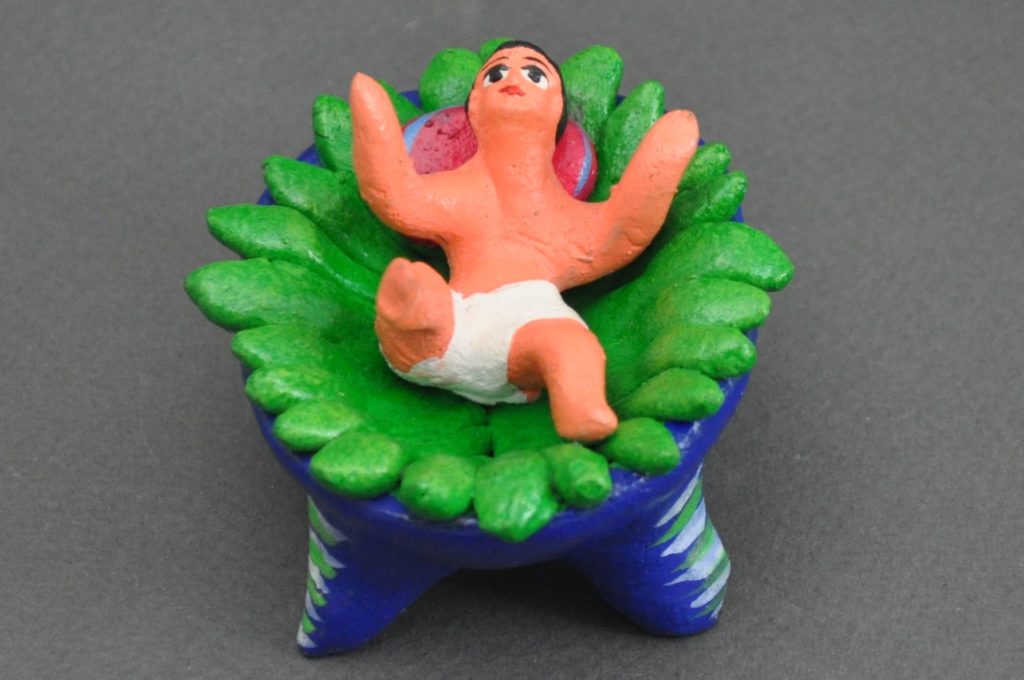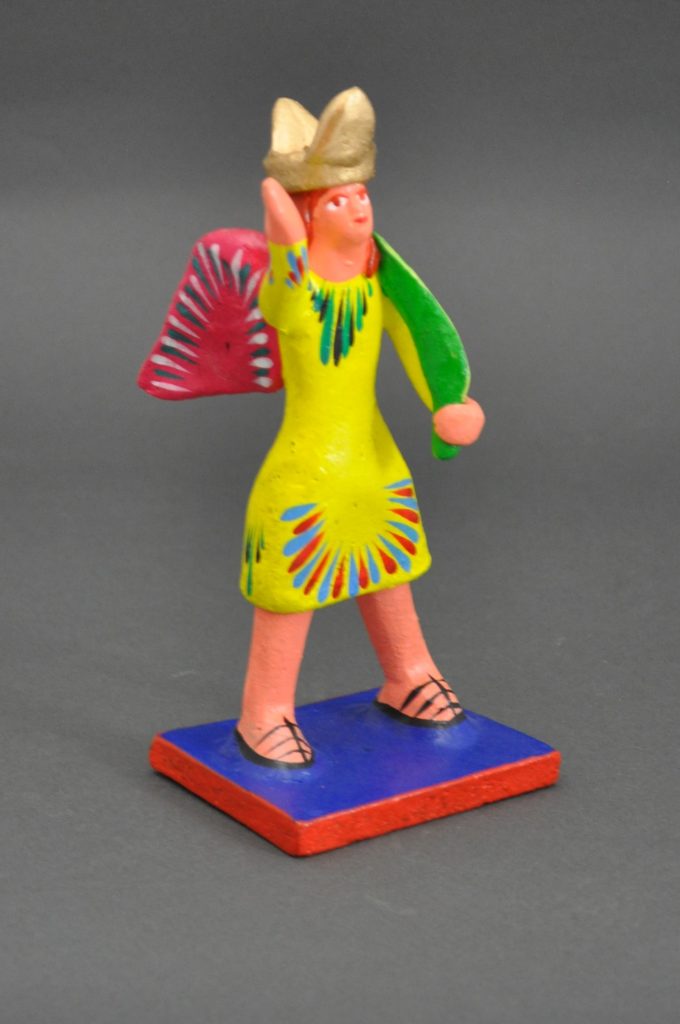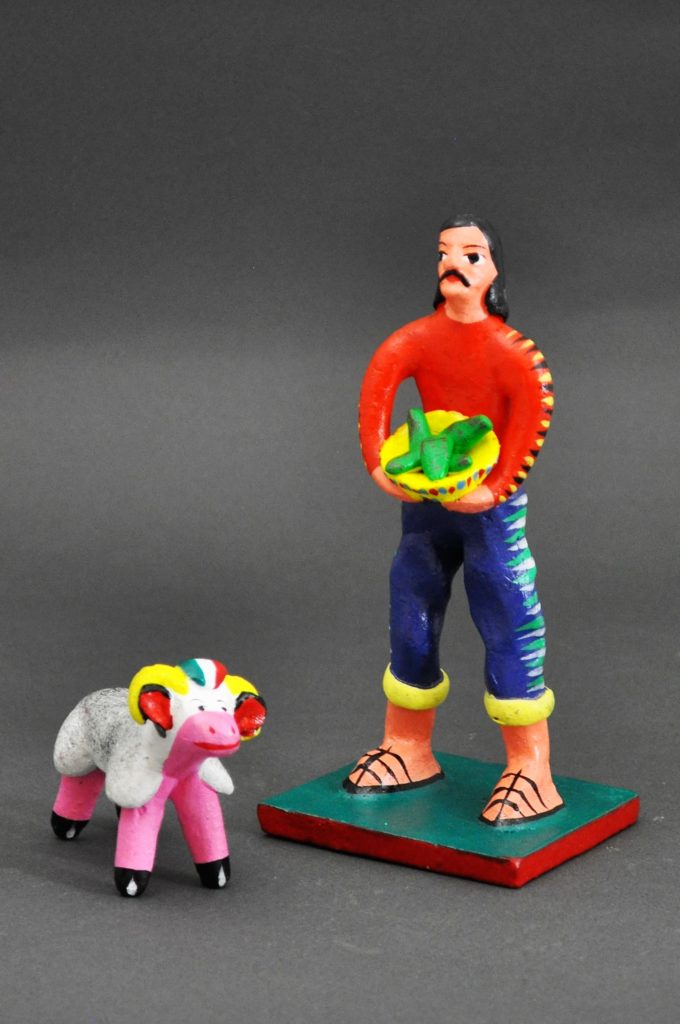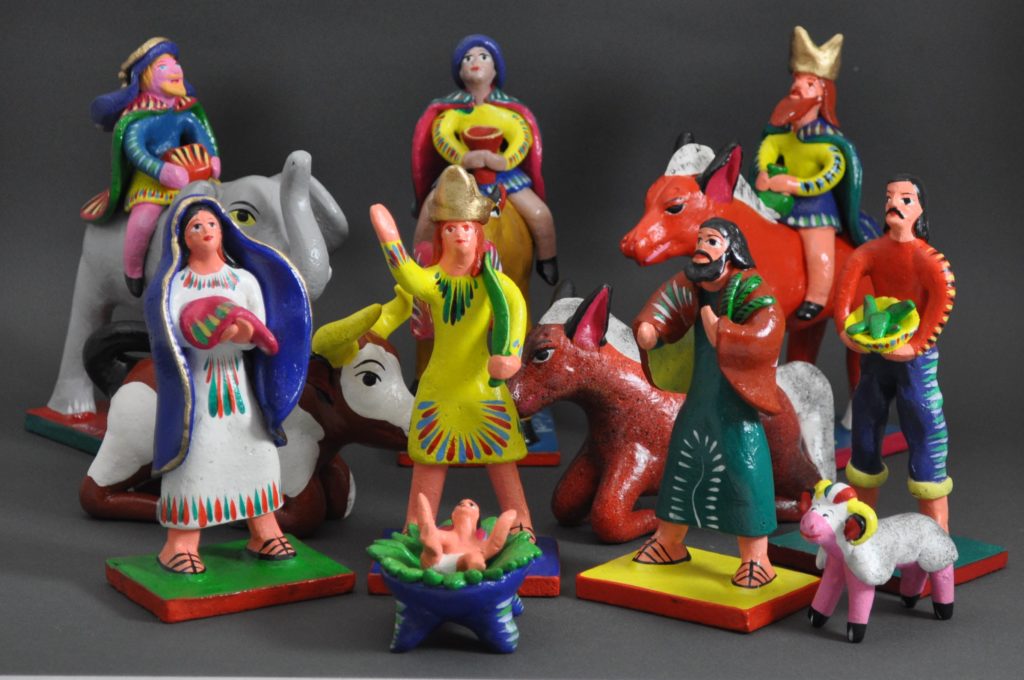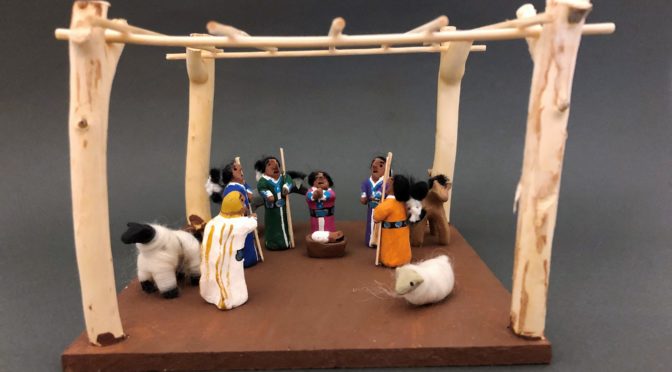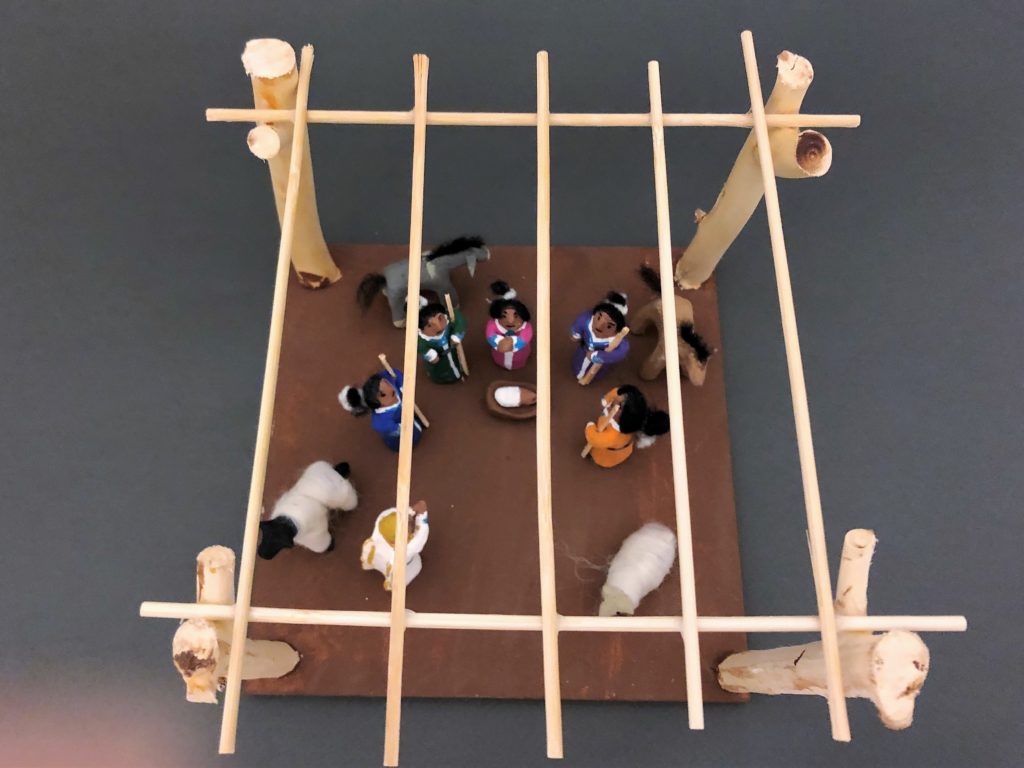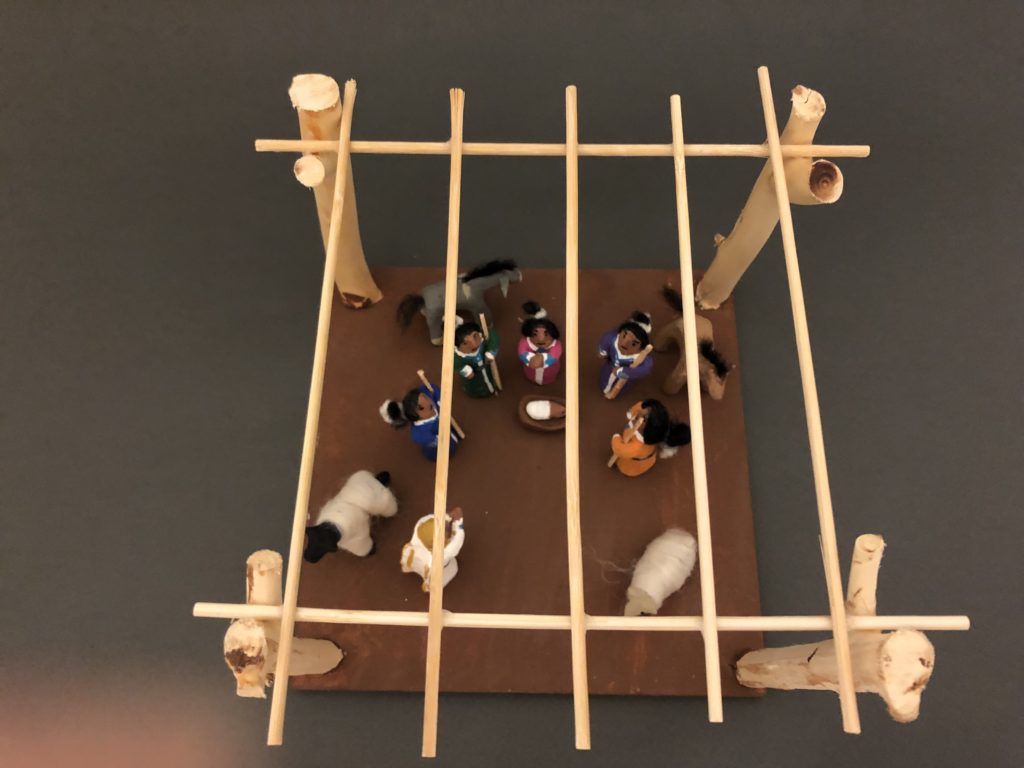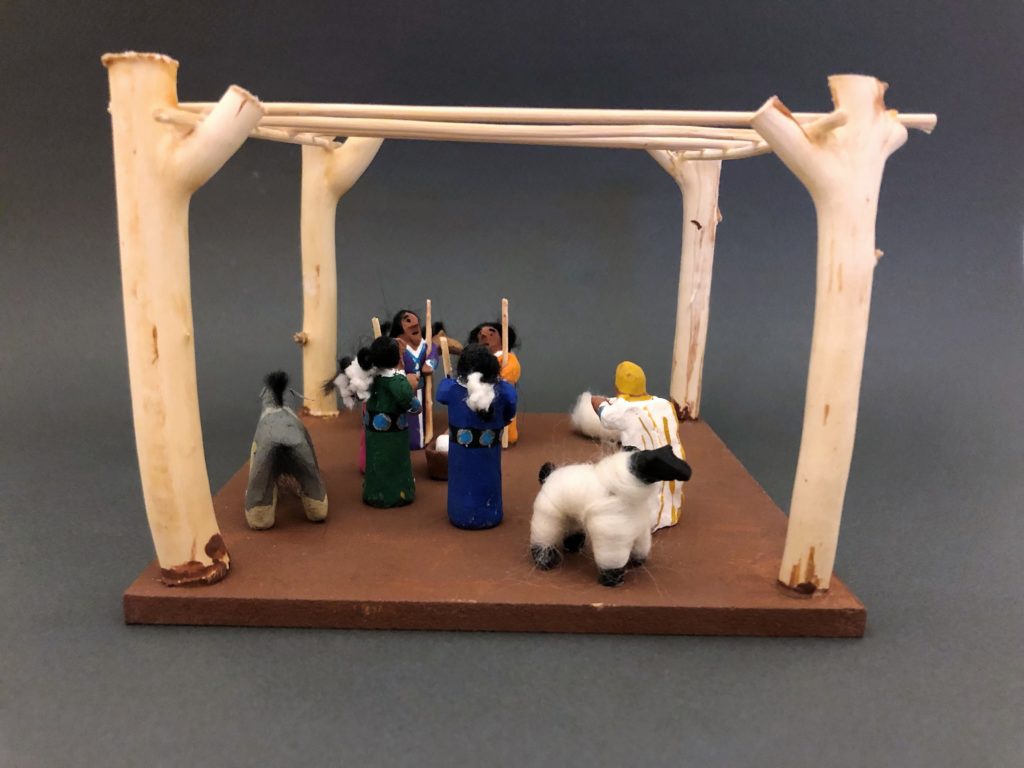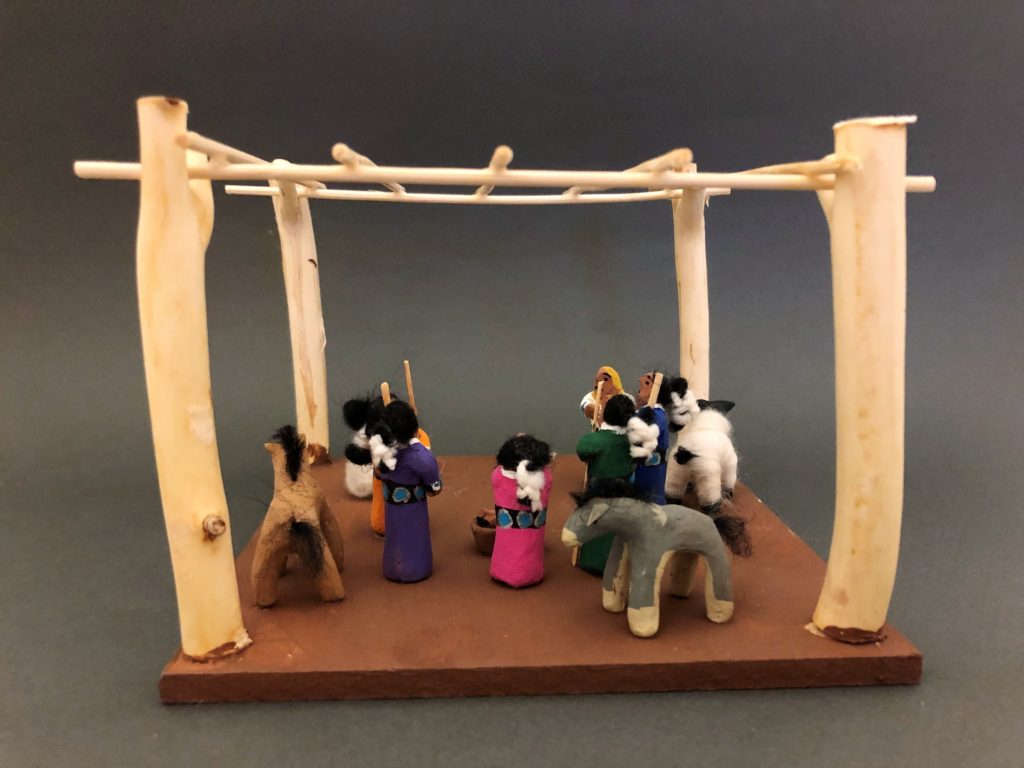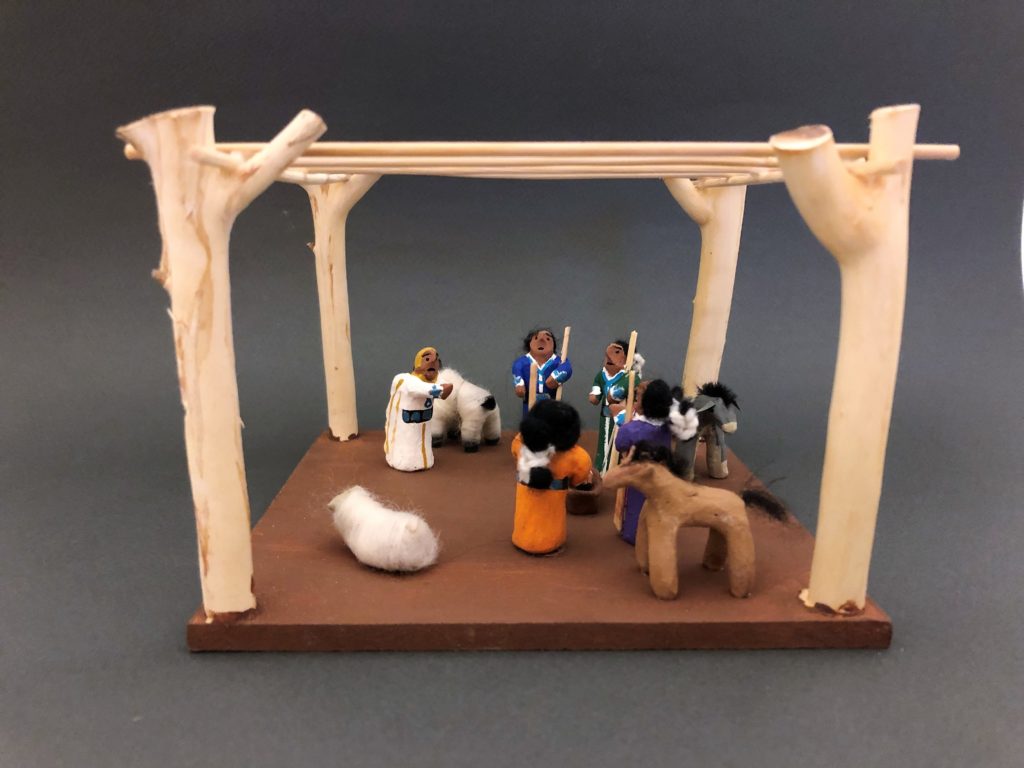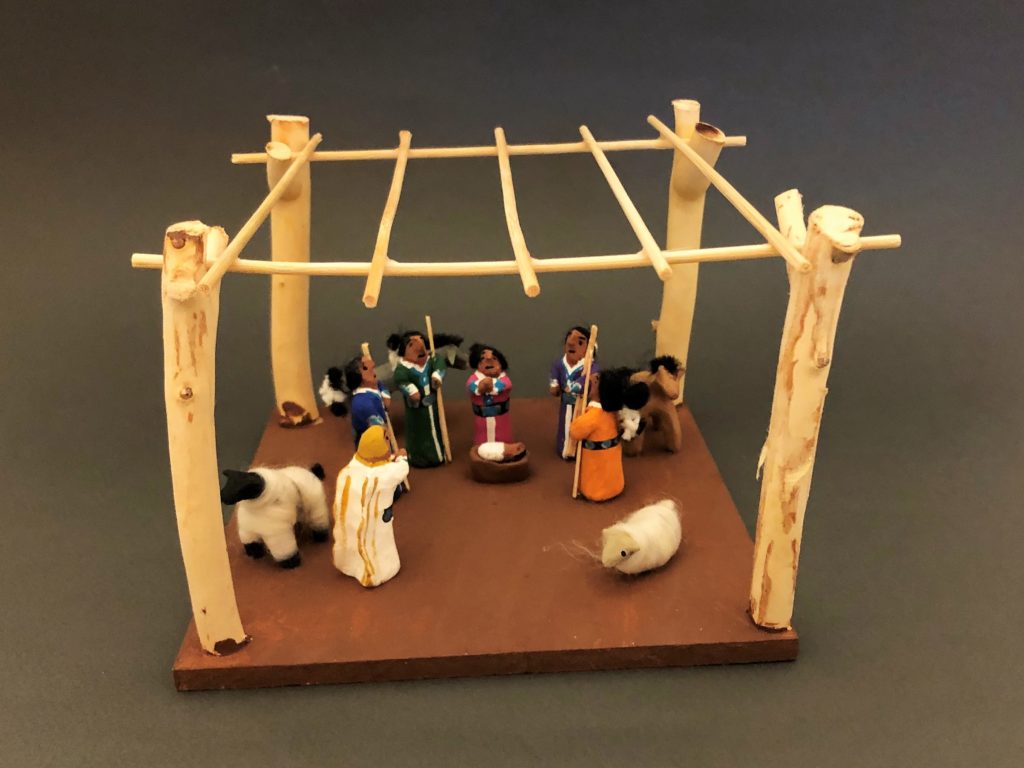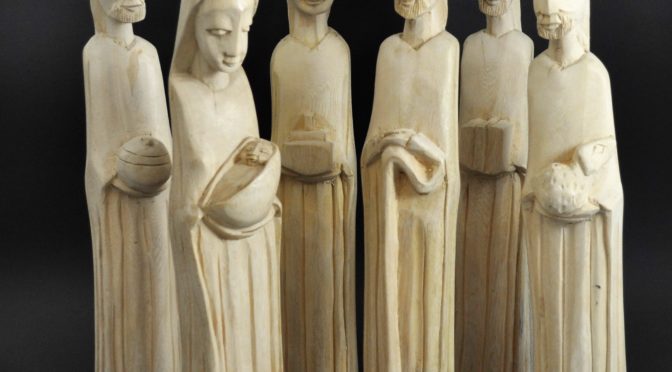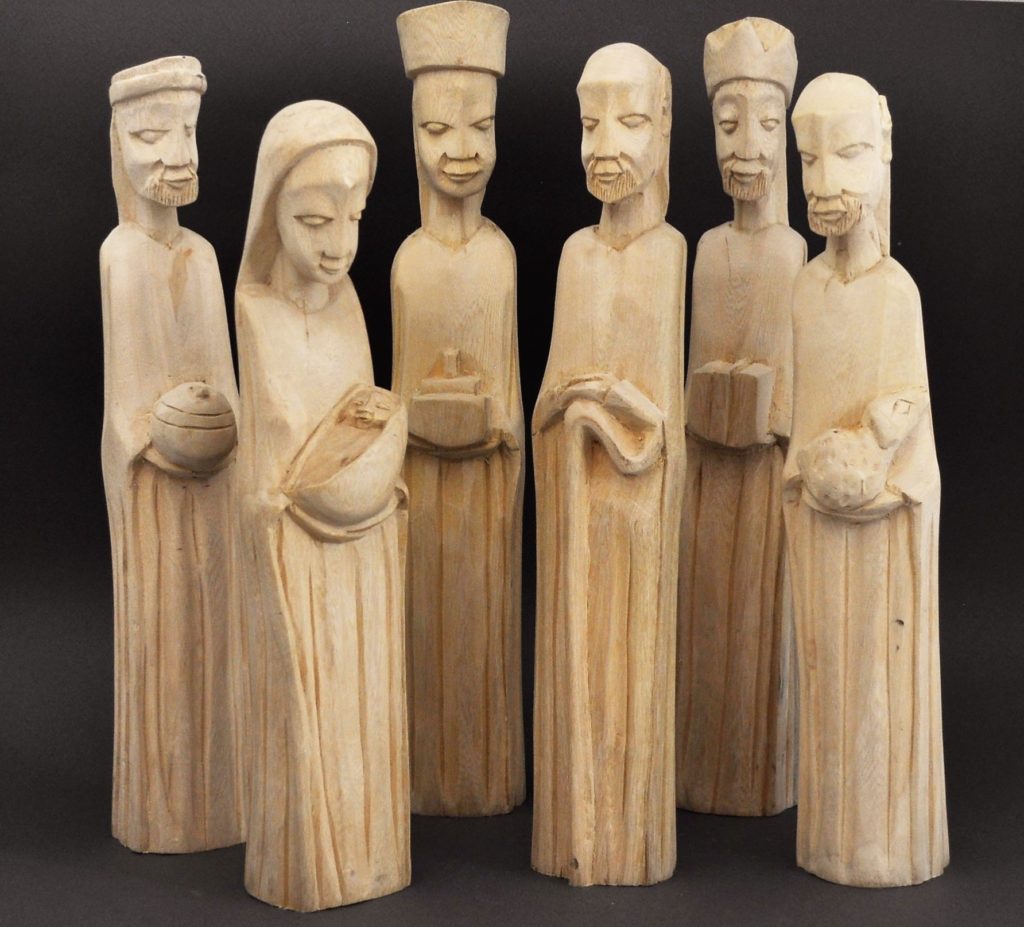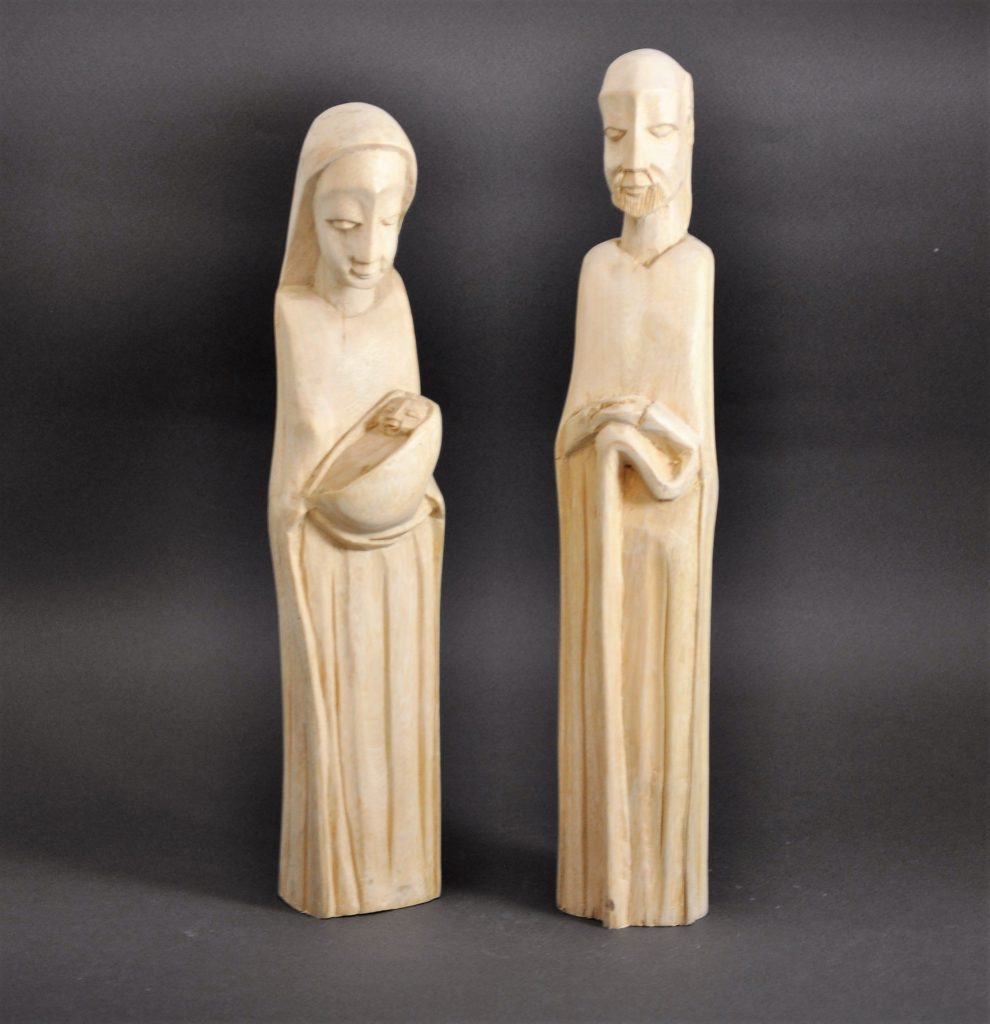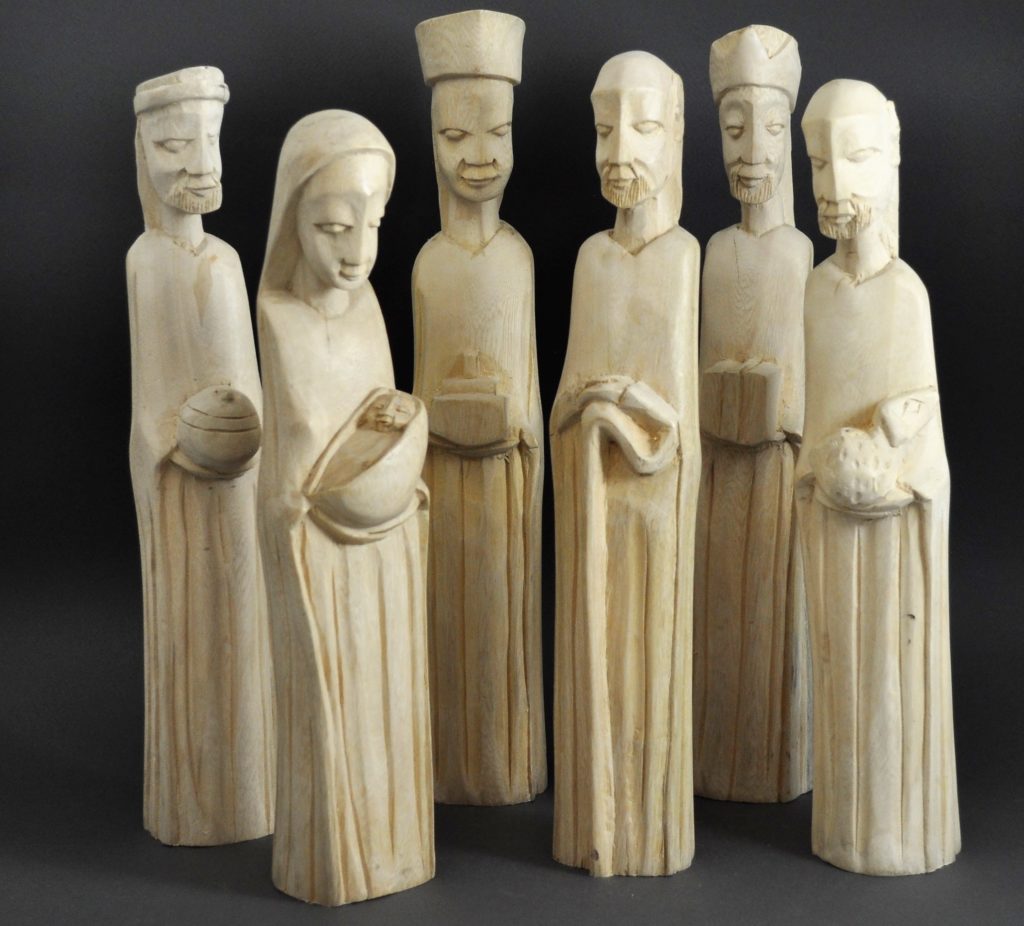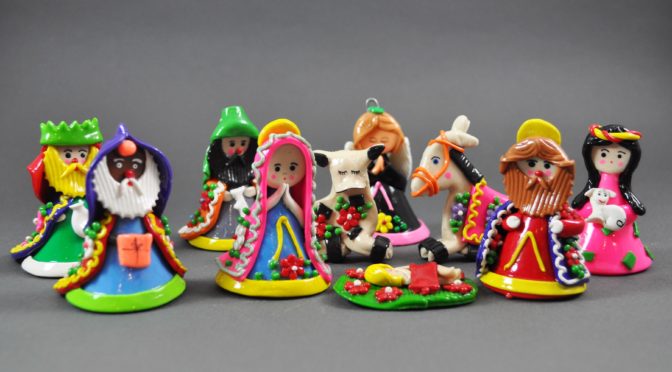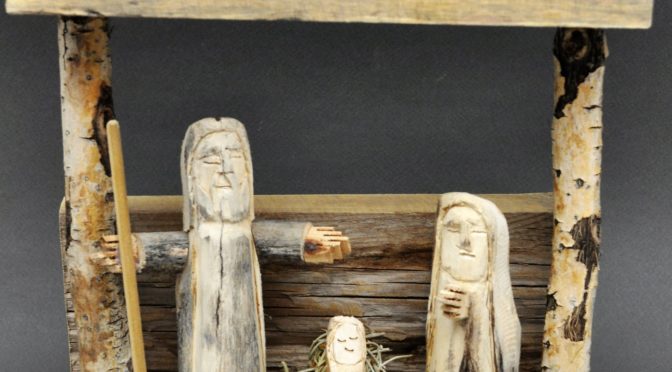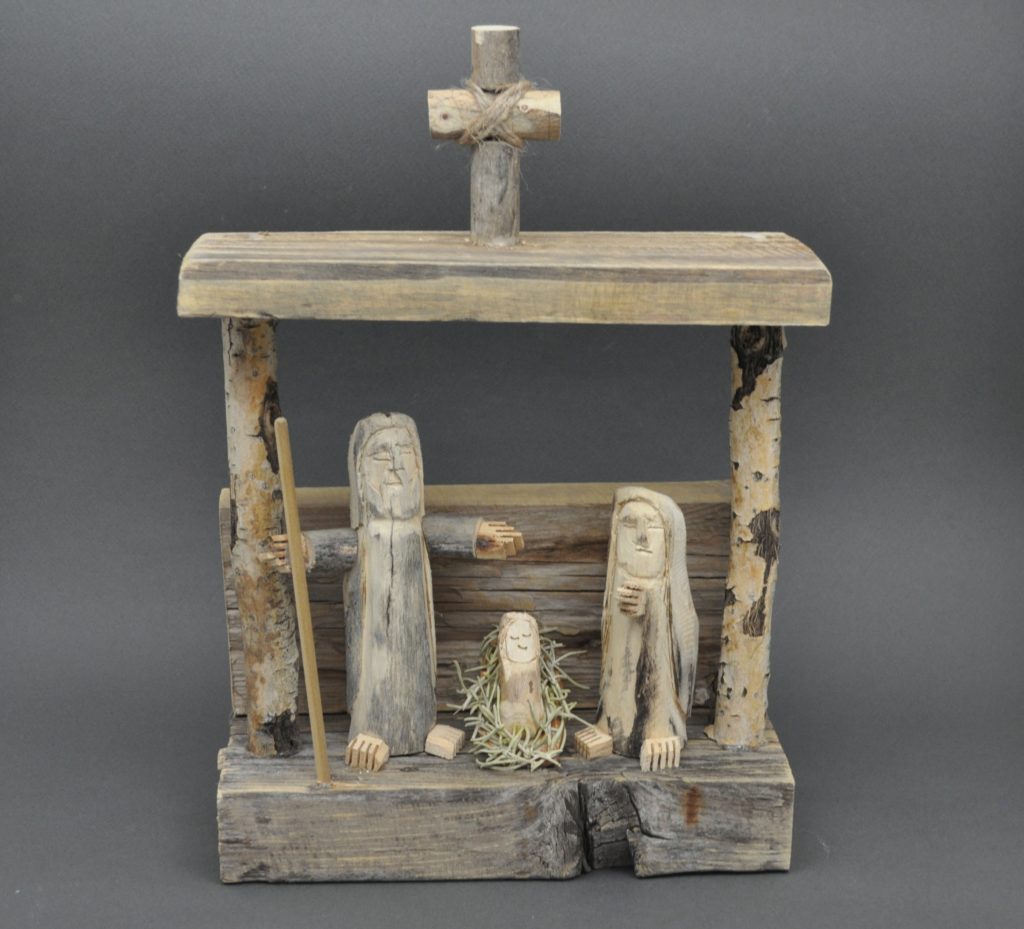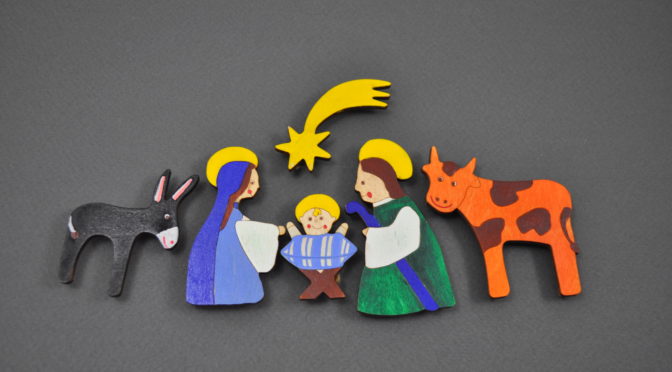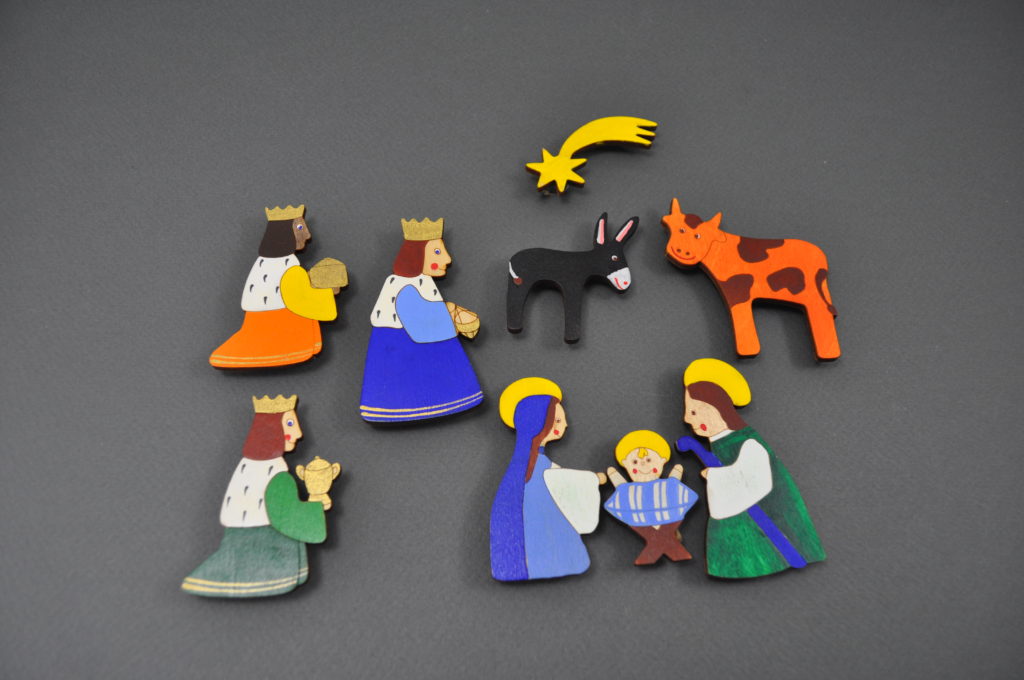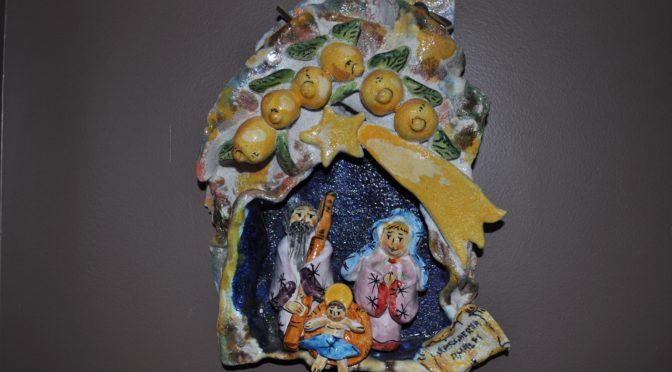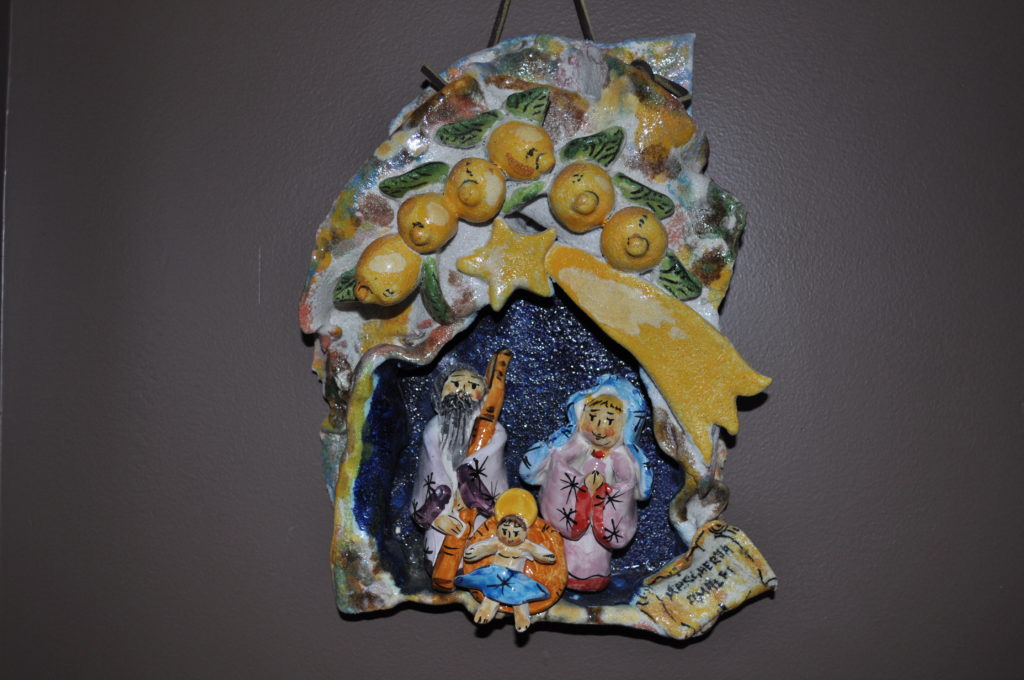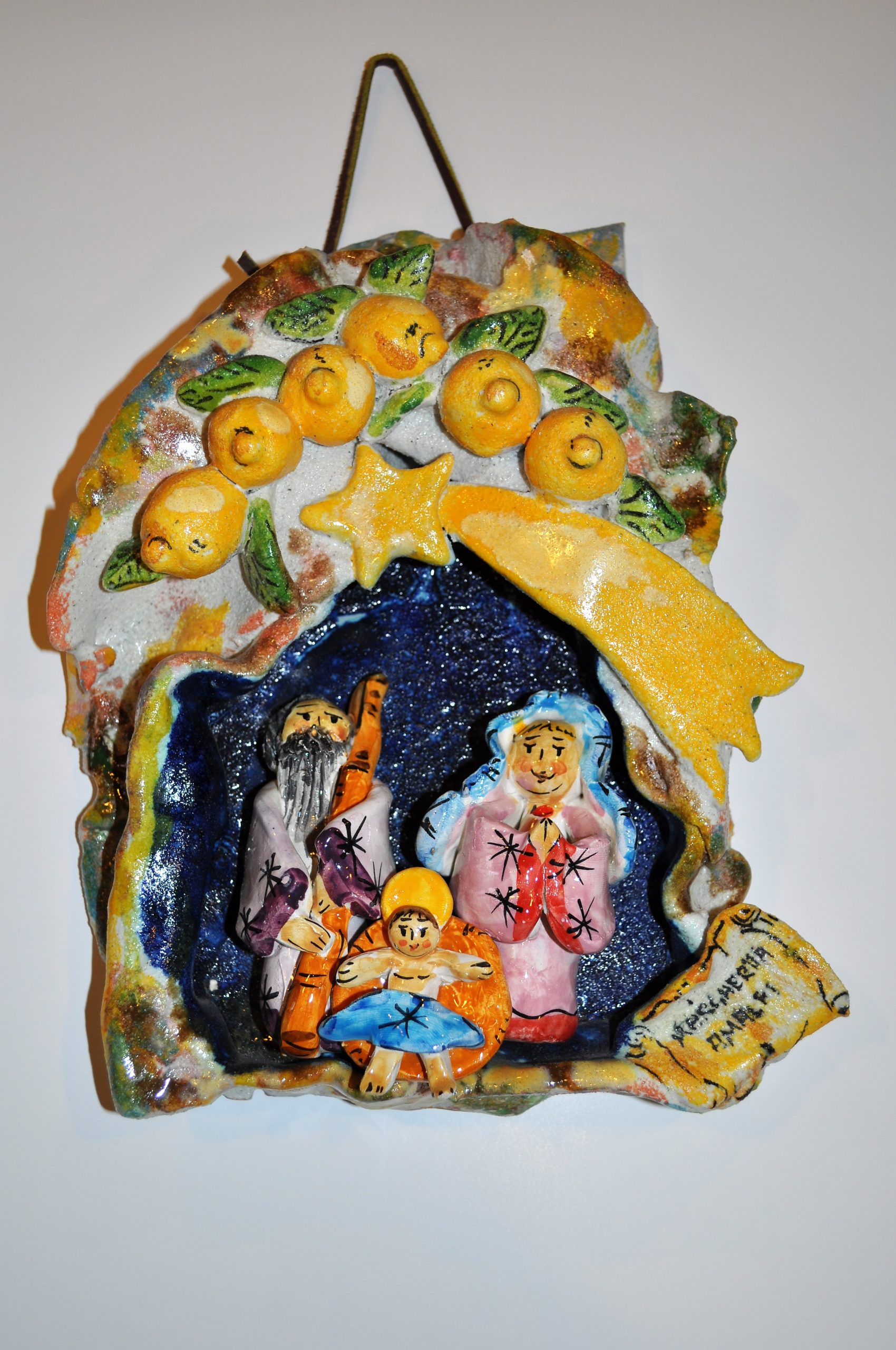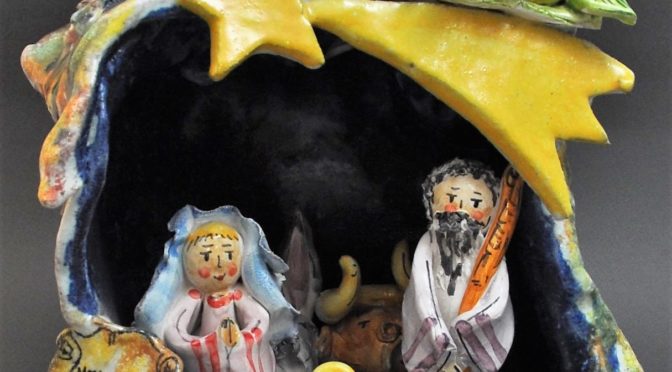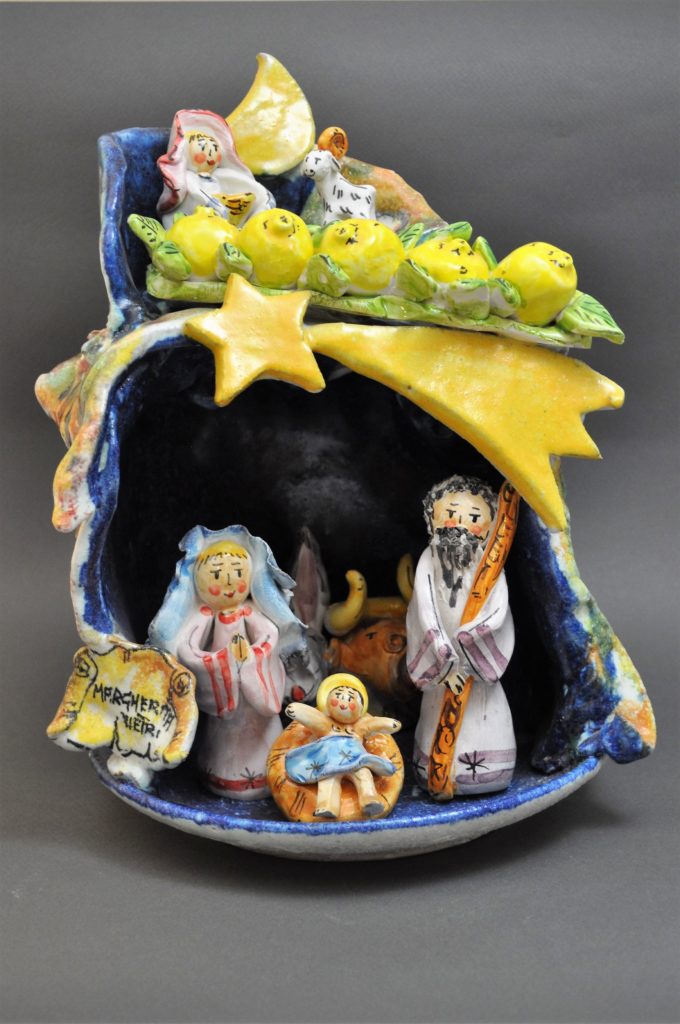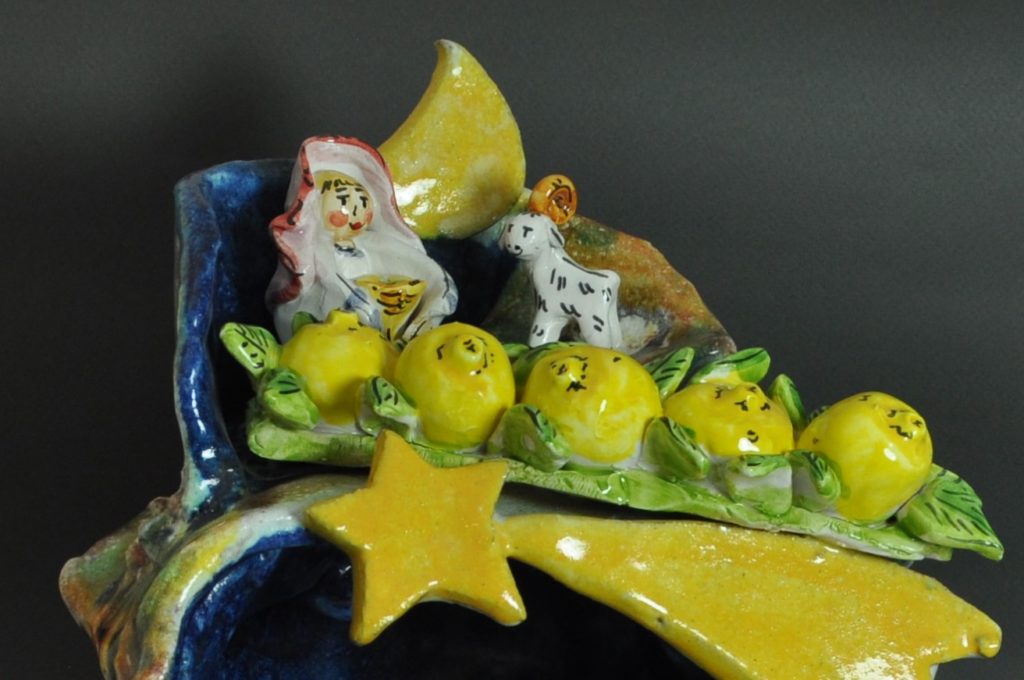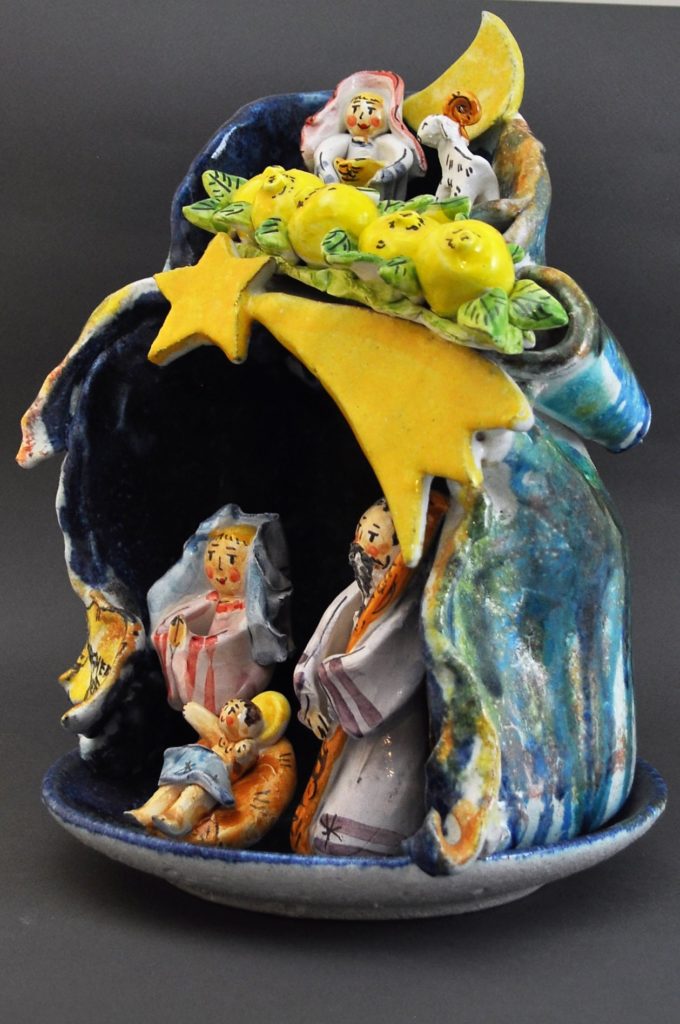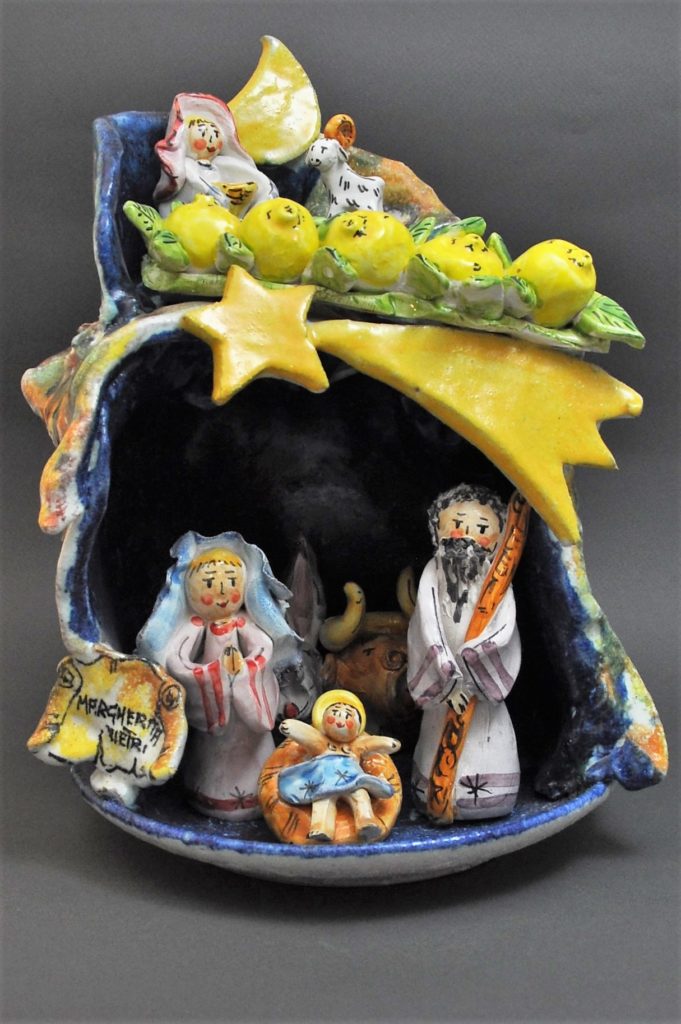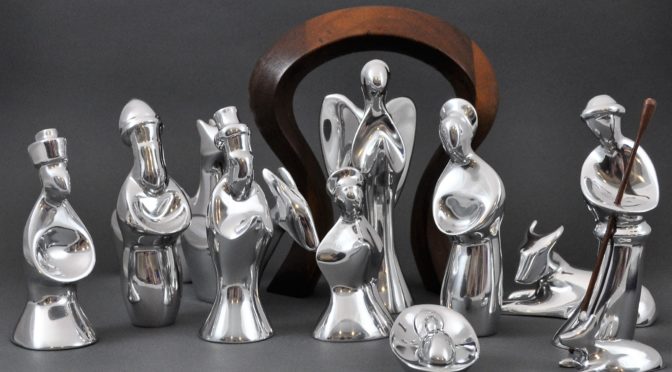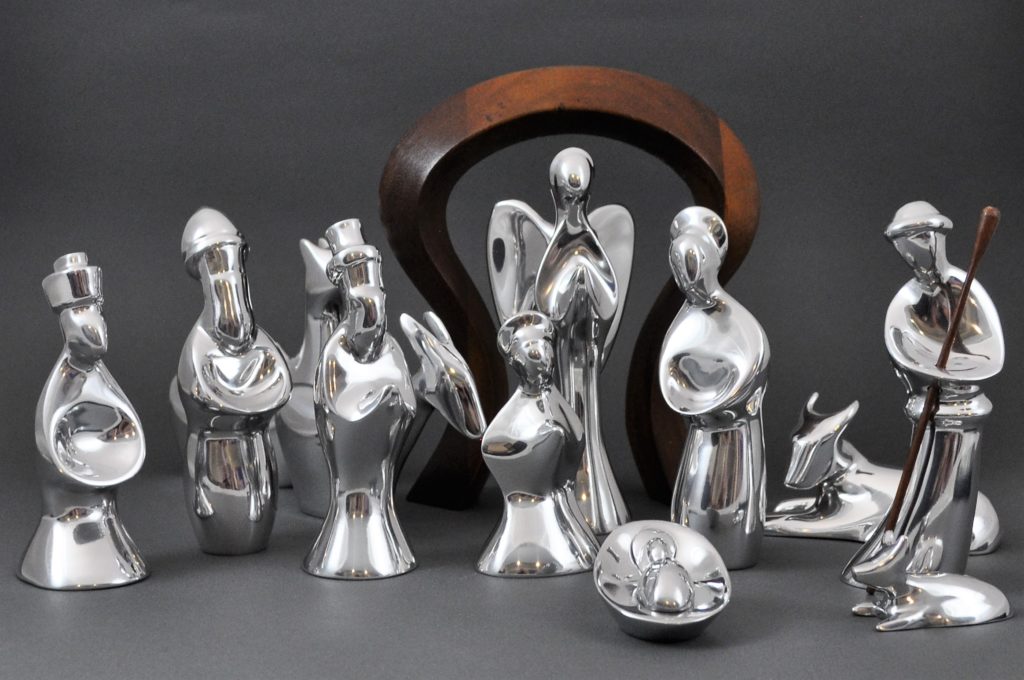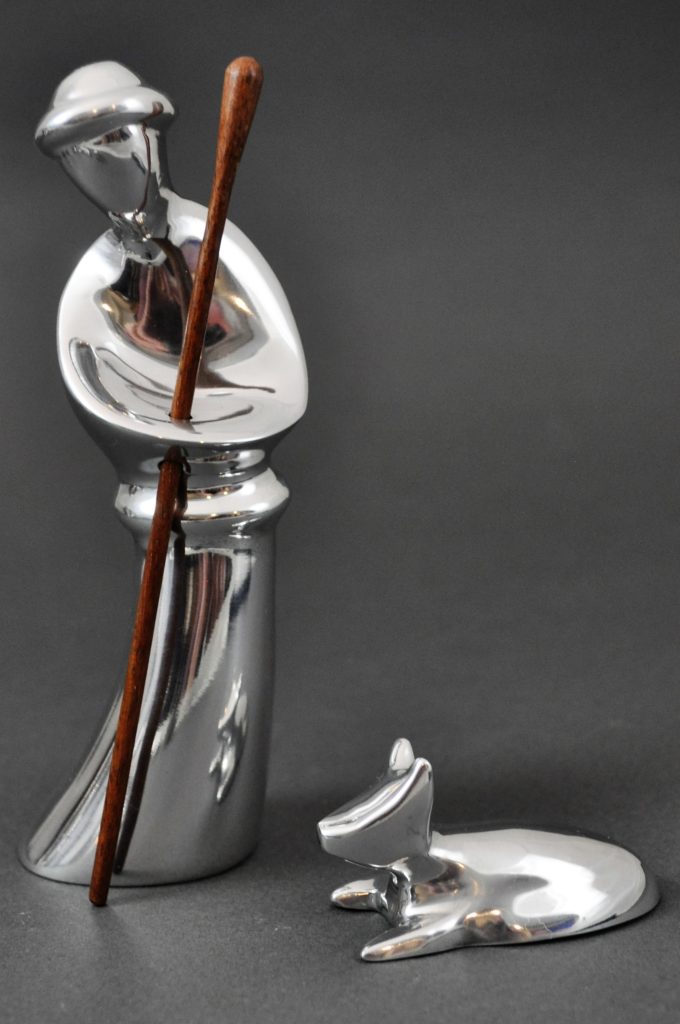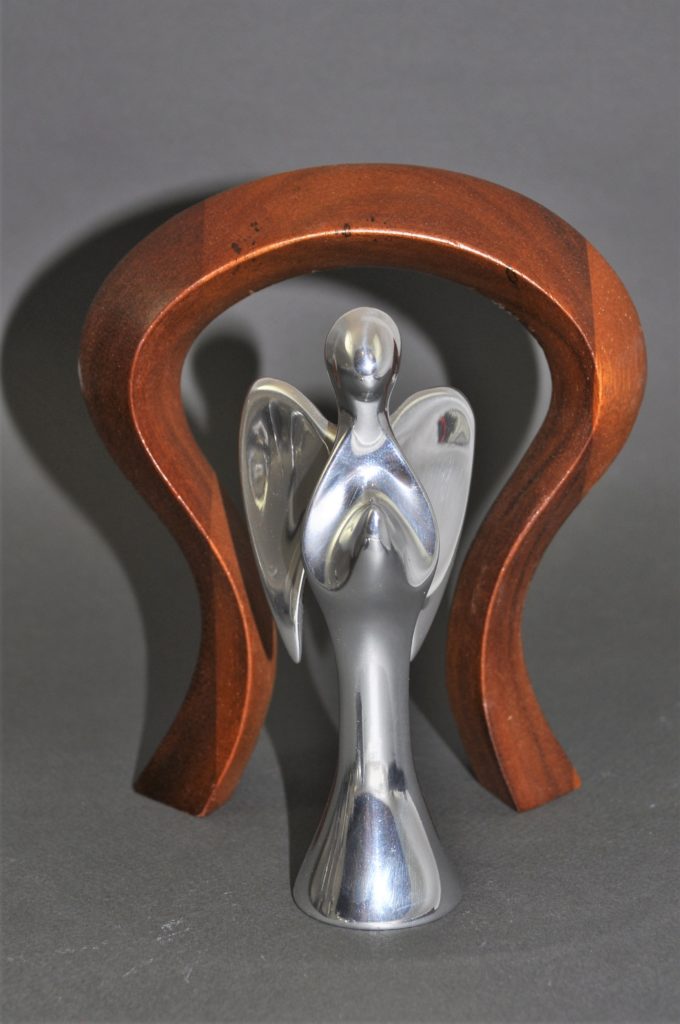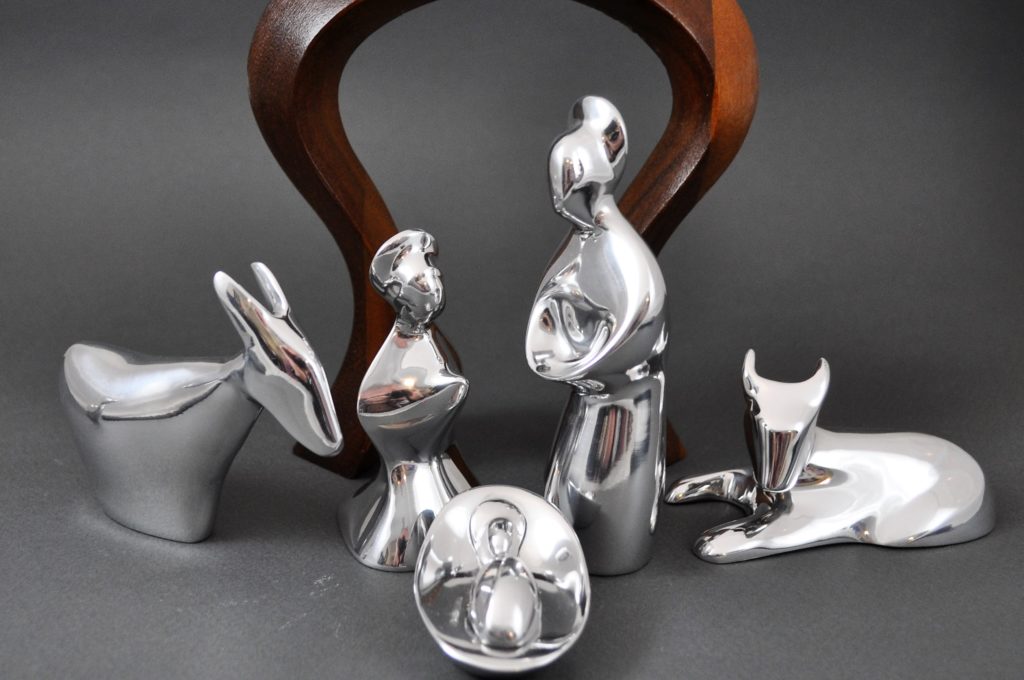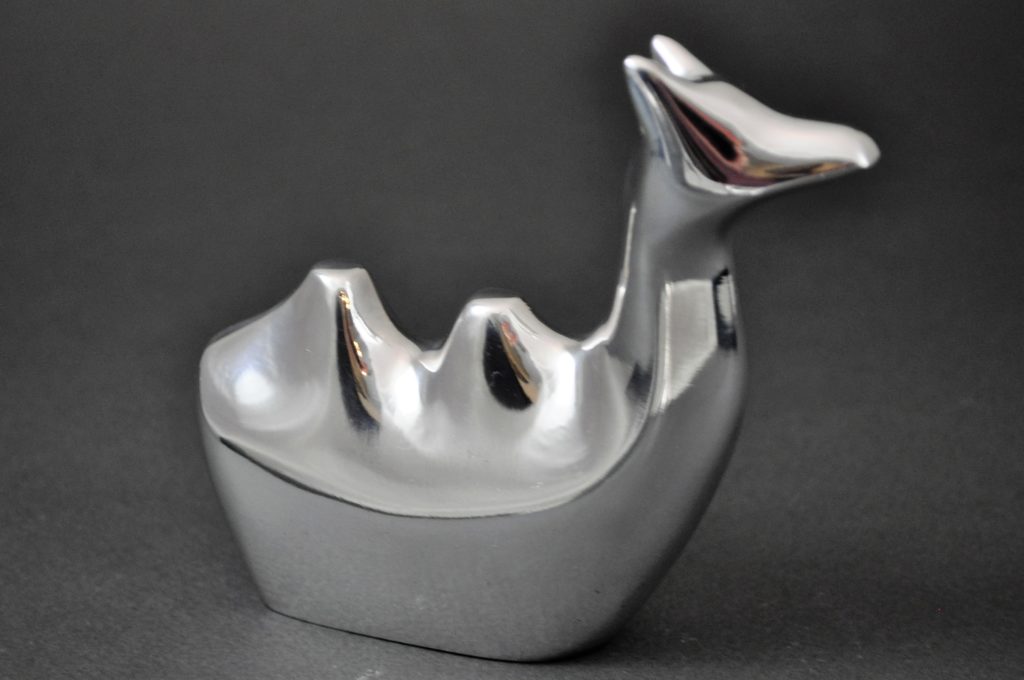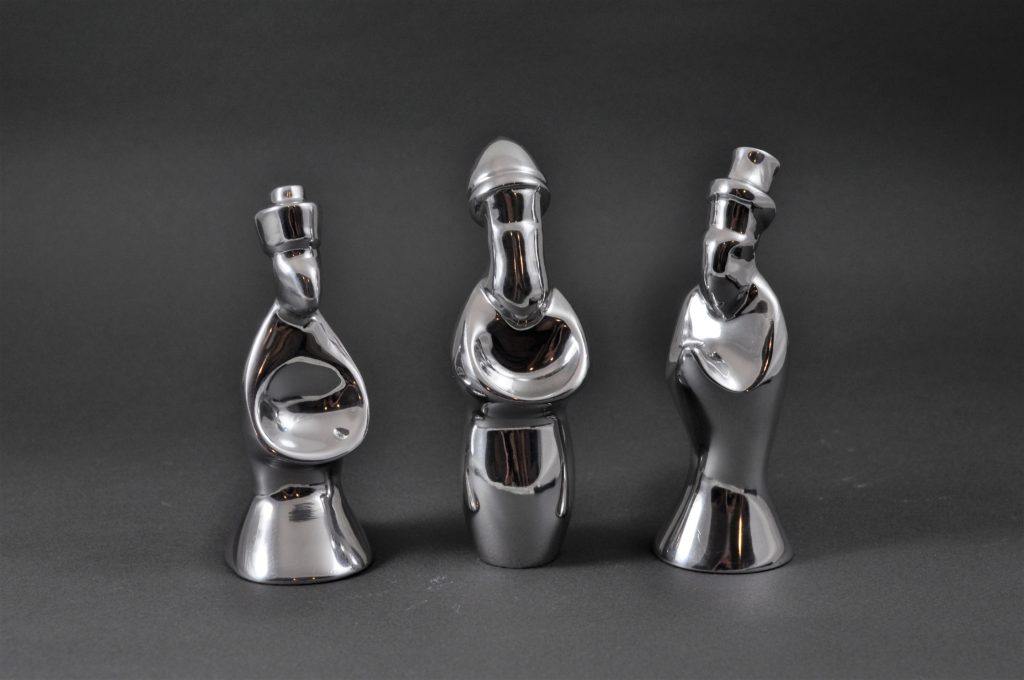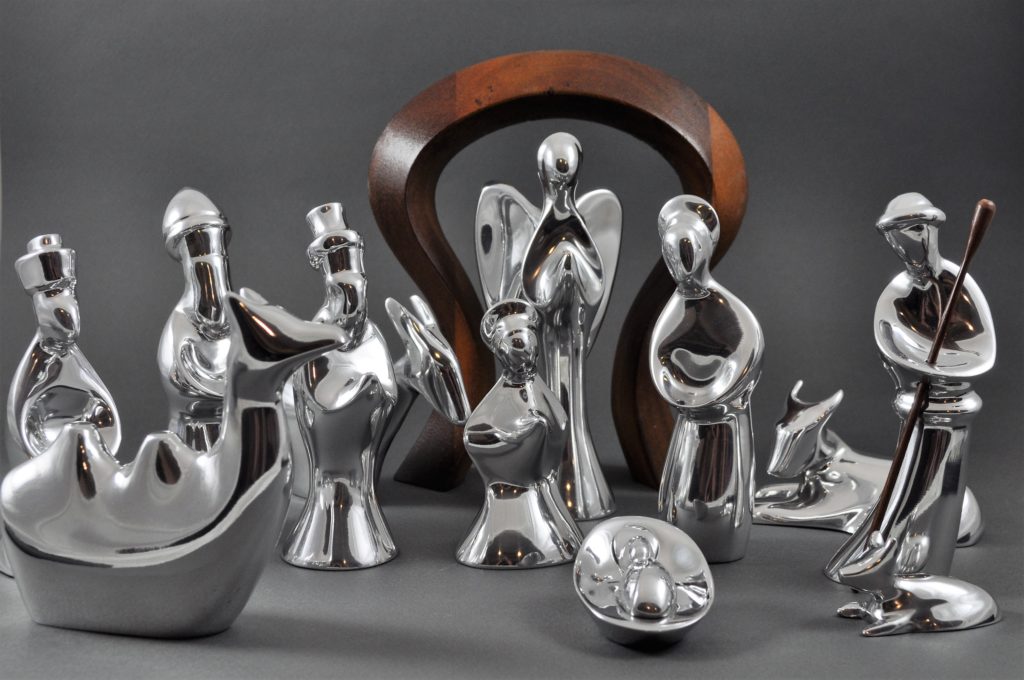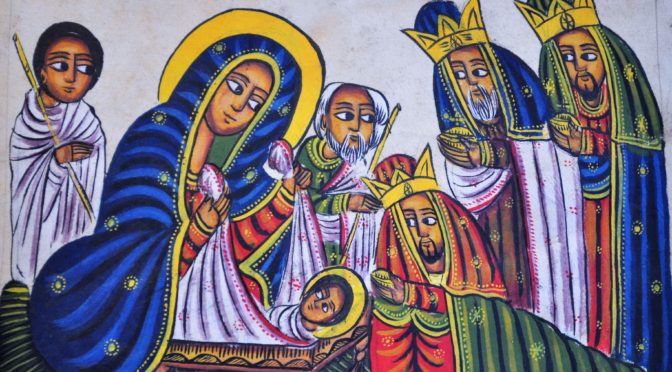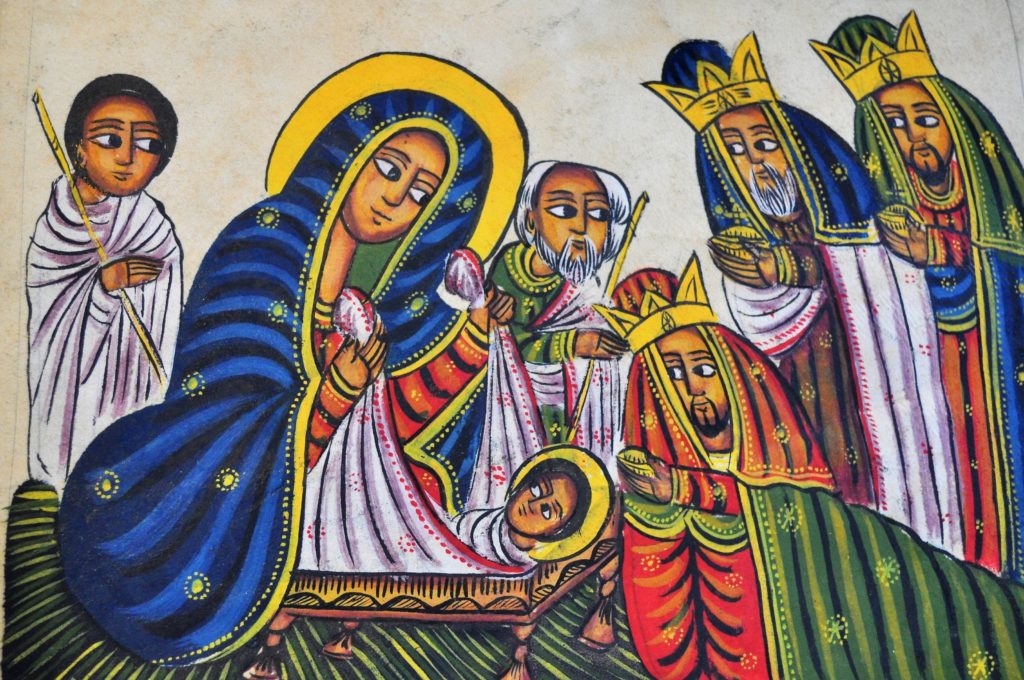This Nativity from Tonala in Jalisco, Mexico was created by the Ortega family. This family has a long tradition of creating whimsical figures and scenes known as “Barro Betus.” They also use this tradition when depicting this nativity. Characteristic of this tradition is the depiction of the Magi riding an elephant, a horse and a dromedary. The bright colors are not only used for the clothing of the human figures but also for the animals. The horns of the lamb, e.g. are painted in the colors of Mexico. The technique used is know as Tonala after the city where it was developed centuries ago.
The ceramic production in Tonala is also known as the authentic mestizo ceramic. The tradition of burnished clay comes from the Tonalteca group, which used clay to produce polished forms.
The bright hues used for burnishing the objects originated from the powdered colorful clay found in Mexican soil. During colonial times, the production of pottery incorporated decoration techniques such as colorful lacquer brought by the Augustinian missionaries in the 17th century.
Today, the artisans of the Valley of Tonalá such as the Ortega family still use the burnishing techniques of their pre-Hispanic ancestors, fused with colonial styles that resulted in sophisticated ceramics that became an important part of Mexico’s artistic traditions.

